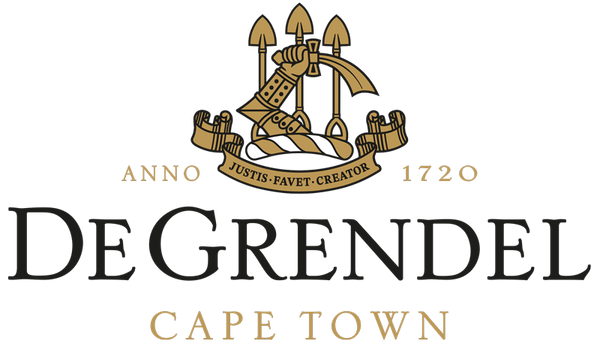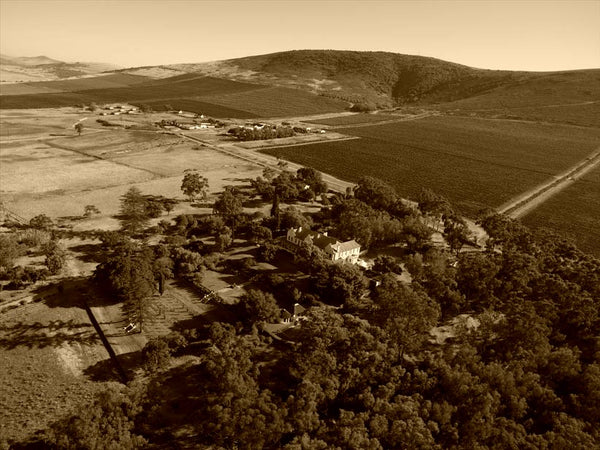De Grendel, history of a farm
Share
The farm De Grendel, which has been in the Graaff family for four generations, is a distinctive segment in the mosaic of a long tradition of farming at the Cape Peninsula.
The early days
In the early days cattle farming at the Cape ruled the roost, as herds were owned by nomadic Khoi people. The first settled farms were occupied after Jan van Riebeeck, who commanded the initial Dutch settlement, landed three ships in 1652 at the future Cape Town and fortified the site as a way-station for the Dutch East-India Company (VOC) trade route to the East Indies.
This happened almost two centuries after the first modern rounding of the cape in 1488 by Portuguese explorer Bartholomeu Diaz in the attempts by the Portuguese to establish direct trade relations with the Far East. Diaz called the cape Cape of Storms, which was the original name of the Cape of Good Hope.
The primary purpose of the way-station Van Riebeeck founded was to provide fresh provisions for the VOC fleets sailing between the Netherlands and Batavia, as deaths en route were very high. He was charged with building a fort, with improving the natural anchorage at Table Bay, planting cereals, fruit and vegetables and obtaining livestock from the indigenous Khoi people. The wheat harvest was insufficient to provide for the ships’ needs, so free burghers were allowed to farm for their own profit. The first nine free burghers received their farms on the Liesbeek River in 1657, and by 1662 sixty of them were farming near Table Mountain.
The first Graaff
The first Graaff who came to South Africa was Johan Jürgen Gräff from Dorn-Assenheim. He made the voyage from Germany on the Borsselen in 1761 as a soldier in the employ of the VOC. Fourteen years later he was followed by the second Graaff, the ancestor of Sir David Graaff’s family in South Africa. He was Johannes Jacobus Gräff (1754–1804), who came from Reidlingen, a town near Baden in the Black Forest. This Gräff, as the surname was initially spelled before it was eventually changed to Graaff, came to Cape Town in 1775 as a 21-year-old soldier in the service of the VOC. He worked as a carpenter and painter.
As a carpenter he became known for a singular heritage: the impressive pulpit of the Groote Kerk in Cape Town. Graaff crafted the wooden pulpit resting on two lions following a design by the sculptor Anton Anreith. Graaff finished the pulpit in 18 months and it was inaugurated on 29 November 1789. Over a century later, his great-grandson Sir David Graaff would serve as an elder in the Groote Kerk and was known as a benefactor of the oldest congregation in the country, where his ancestor’s handiwork still drew admiration
De Grendel
Sir David became the first Graaff to own De Grendel, which he bought in the1890s. The farm had been awarded to Booy Booysen in the early days of the Cape and registered in 1720 by a certain Meiboom.
De Grendel means “the latch” in Dutch. This farm was historically the gateway on the route to the inland settlements of Durbanville and Stellenbosch which had to be opened to traverse the Tygerberg, which got its name from leopard-like spots of vegetation on the steep hill. The road from Cape Town ran past it because back then it was easier for ox-wagons to go across the Tygerberg than over the sandy plains of Bellville.
Sir David Graaff’s interest in De Grendel grew after a visit to Argentina, a country with huge herds of cattle and sheep, where another species attracted his attention: the Argentinian Arab horses, which made a major impression on him. He bought Arabs bred by H. Ayersa of Buenos Aires and brought them to Cape Town. He also imported Arabs from Syria, including a registered mare called Malaf. Initially, the stud horses were brought to Fernwood, an estate close to Kirstenbosch that he was renting. However, the damp climate there was not suited for such horses and, therefore, he bought the Tygerberg property De Grendel, where he had magnificent stables built and used the horses for riding and as carthorses.
Over time he also established his own stud of thoroughbred Friesland cows on the farm. On a visit to the Netherlands in 1891 he bought Friesian stud cows which were transported to De Grendel by sea. The stud bull named Pieter that he acquired from S.J. van der Werff of Leeuwarden was regarded an exceptional specimen. Press reports stated at the time: “It was admitted on every hand there was not his compeer in the whole of Friesland, and the Frieslanders say nothing finer was ever exported…”
Graaff ran this farm on the slopes of Plattekloof as a gentleman’s estate for which he would become known all over the country. His stud cows and Arab horses would win top prizes at various agricultural exhibitions. In 1911, for example, three of De Grendel’s Arabs won their respective divisions at the Rosebank Fair in Cape Town. Their names were engraved on a silver tray still in the possession of the Graaff family: Sultan, the top stallion, Kalaf, the top mare and Zarina, the best filly.
Sir "Div" Graaff
Graaff’s eldest son, Sir De Villiers Graaff, the second baronet who would become South Africa’s longest-serving opposition leader, continued farming at De Grendel. While prisoner-of-war in Germany during the Second World War he admired German merino sheep, so in 1946 he brought similar flocks to De Grendel.
Agricultural journalists acclaimed Div the Agricultural Man of the Year in 1980 for his scientific and generally accomplished management of his Friesland stud and his farming enterprise at De Grendel. He died on De Grendel at the age of 85 on 4 October 1999.
Sir David, third baronet of De Grendel
His son Sir David Graaff, the third baronet, continued the legacy left by his father and grandfather before him. The historic De Grendel farm remains the heart and soul of the family, assisted by members of staff whose roots on the property go back five generations. Sir David has built a reputation for upliftment in the community, supporting farm labourers and their families and encouraging education for their children.
In the light of Durbanville’s reputation as an excellent area for viticulture he also started producing wine on De Grendel. The farm is 7 kilometres from the ocean and the vineyards are 250 to 300 metres above sea level. His father and grandfather did not have any vineyards, but years earlier grapes had been grown at De Grendel. The family traced an article in the Cape Gazette of 1812, according to which a certain Joseph Heyns had put De Grendel up for sale, with 10 000 grapevines among the movables. The vineyards were probably eradicated by the phylloxera plague that hit the Cape in the late 19th century.
It was Sir David’s insight that injected new life into the established farm, now home to Holstein stud cattle, sheep, grain and vines. When he died at the age of 74 on 24 January 2015, De Grendel’s varietals were firmly established as key players in the South African wine industry with a number of accolades to their name. His eldest son, De Villiers, who inherited the baronetcy, was set to continue the proud farming tradition of his forefathers.

